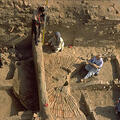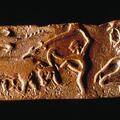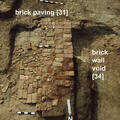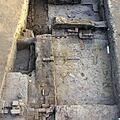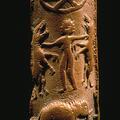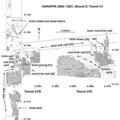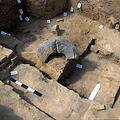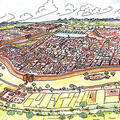Excavating and sampling the sediments
Jonathan Mark Kenoyer excavating and sampling the sediments associated with the HARP-excavated platform, which was partly robbed of baked bricks during the Harappan period itself (Trench 43). Pottery found under the platforms permits them to be

